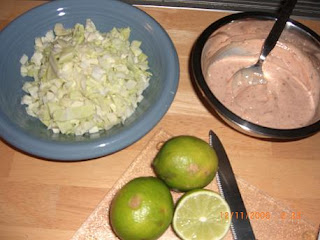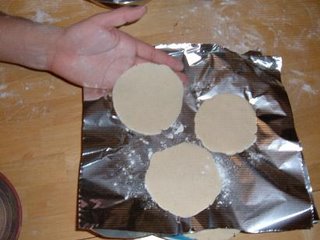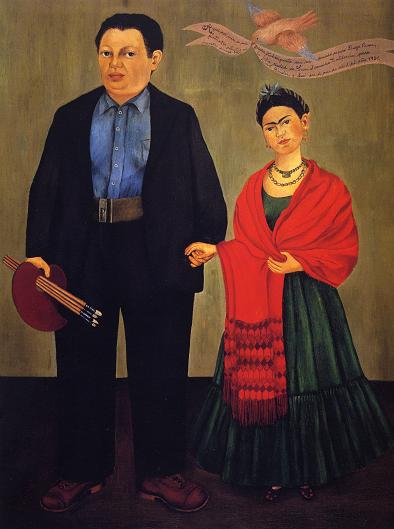 There is no other way to put it, we had a glorious wedding. The food played an important part, as food always does during an event that includes family and friends. But it’s me and Peter, so libations were a co-star as well.
There is no other way to put it, we had a glorious wedding. The food played an important part, as food always does during an event that includes family and friends. But it’s me and Peter, so libations were a co-star as well.We had about 100 family and friends travel to Guanajuato for the wedding. Amazing!!! It was sort of like Camp Duarte/Velazquez. Everybody intermingled all week, touring the city together, drinking, eating and dancing the night away. I’ve often heard from newlyweds that their wedding was a blur, the benefits of a destination wedding was to really spend quality time with guest and foster an environment where we truly felt like one family by the end. But it’s a wedding, so there were some stressful moments for us.
Guanajuato is still a bit provincial, particularly the local rules about getting married in the Catholic Church. At the main office we were given explicit instruction about what we had to do, but when we asked exactly how we could accomplish all our task, it became, “Well, the guy should be there around 9:30am, but if he’s not come back later.” We came to find out that we didn’t actually have a finalized wedding date until we “presented ourselves”. I knew there was a problem when Peter was discussing our wedding with Angel (the guy in charge while the priest was out) and he turned white. But with a shrug, Angel said, “So you want to get married on Friday?” And then the kicker, I had to give confession IN SPANISH before we could get married in the Church. So there I was with my Mom and Norma writing out a script for me to read to the Priest the next morning. The next day, Peter went first and let’s just say that the Priest asked him some pretty interesting questions. The confession was out in the open, so I could see Peter’s horror stricken face as he answered “no” to committing some very peculiar sins. Then it was my turn, I read from my script. I was really nervous and was speaking very quietly, so he asked me to clarify if I had lied, so I pointed to my sin of lying on my paper and told him “si”. I got a wink and a “bueno”. Phew!! All done.
If you are ever going to get married or throw a big event in Mexico you must hire our coordinator, Alicia Vilar (one day I’m going to figure out how to put a link). Even though a wedding in Mexico cost about a third that it would in the U.S. we were still on a budget. But you would never have been able to tell, she knew all the right places to cut back and where to splurge. But even she was surprised at what we got at the Camino Real Hotel for our welcome party. In order to cut corners we ordered appetizers for less people than we expected. So Peter and I, along with close family promised not to eat. Turns out that wasn’t necessary, this was not finger foods. In the picture you will see taquitos, empanadas, cheese, meatballs in Chipotle sauce, potatoes in spicy red sauce. We enjoyed the music of Estudiantines and drank beer and wine (taste tested earlier in the week) and mingled with our guest on the amazing patio of the hotel. Everyone was sufficiently primed for the big event the next day.

Ok, I cried…but Peter cried a little too, which made everyone else cry, which made it the most love filled moment of my life. But mostly we ate, drank and danced the night away. That’s really why you throw a wedding anyway, right? So the food (I wasn’t taking pictures at the wedding so I’ve had to rely on others)… The cocktail reception had a few surprises, though I wasn’t there to enjoy it. We were thinking, “gourmet street food” when we picked our appetizers. Set against a beautiful Hacienda, perfection!
Toasted tortilla baskets with shrimp ceviche
Jicama and cucumber cocktail with lime, orange and chili powder
Corn mushroom quesadillas
Mushrooms stuffed with pork rind in green sauce
And for a conversation piece to throw back with some tequila: Tortilla chips with guacamole and fried grasshoppers!!

Dinner:
Squash blossoms stuffed with cheese and pumpkin seeds
Cuitlacoche (corn mushroom) stuffed chicken breasts with ranchero cheese and bean sauce
Guava mousse with cajeta sauce and strawberry coulis


 The food was presented beautifully. But I have to admit, I don’t remember all the flavors. It’s really just stimulation overload at your own wedding. I’m ready to just be a guest at a wedding from here on out.
The food was presented beautifully. But I have to admit, I don’t remember all the flavors. It’s really just stimulation overload at your own wedding. I’m ready to just be a guest at a wedding from here on out.But my mom added a surprise and it was the hit of the night. At midnight we served Pozole. Now this I remember, because it really hit the spot. It was pork Pozole in red chile broth, super spicy and delicious. I highly recommend serving guest food at midnight, even if they are not driving home. (Sadly no pictures have turned up)
Like I said, libations were a co-star. We served freshly blended margaritas (Regular, Mango and Tamarindo (tamarind). The waiters passed around shots of Centenario Anejo. And if that wasn’t enough you could have Sangria or Rum and Coke. There were soft drinks and Jamaica Agua Fresca to keep folks hydrated.


The next day we had a brunch with fruit, chilaquiles and pan dulce with lots of coffee!! Everyone looked really tired and really happy...and we couldn't have been more blessed.
Pictures have been streaming in via facebook and I’m anxiously awaiting the photogs pics. So I keep reliving the week in my mind as I finally emerge from my “mexicoma”.




























